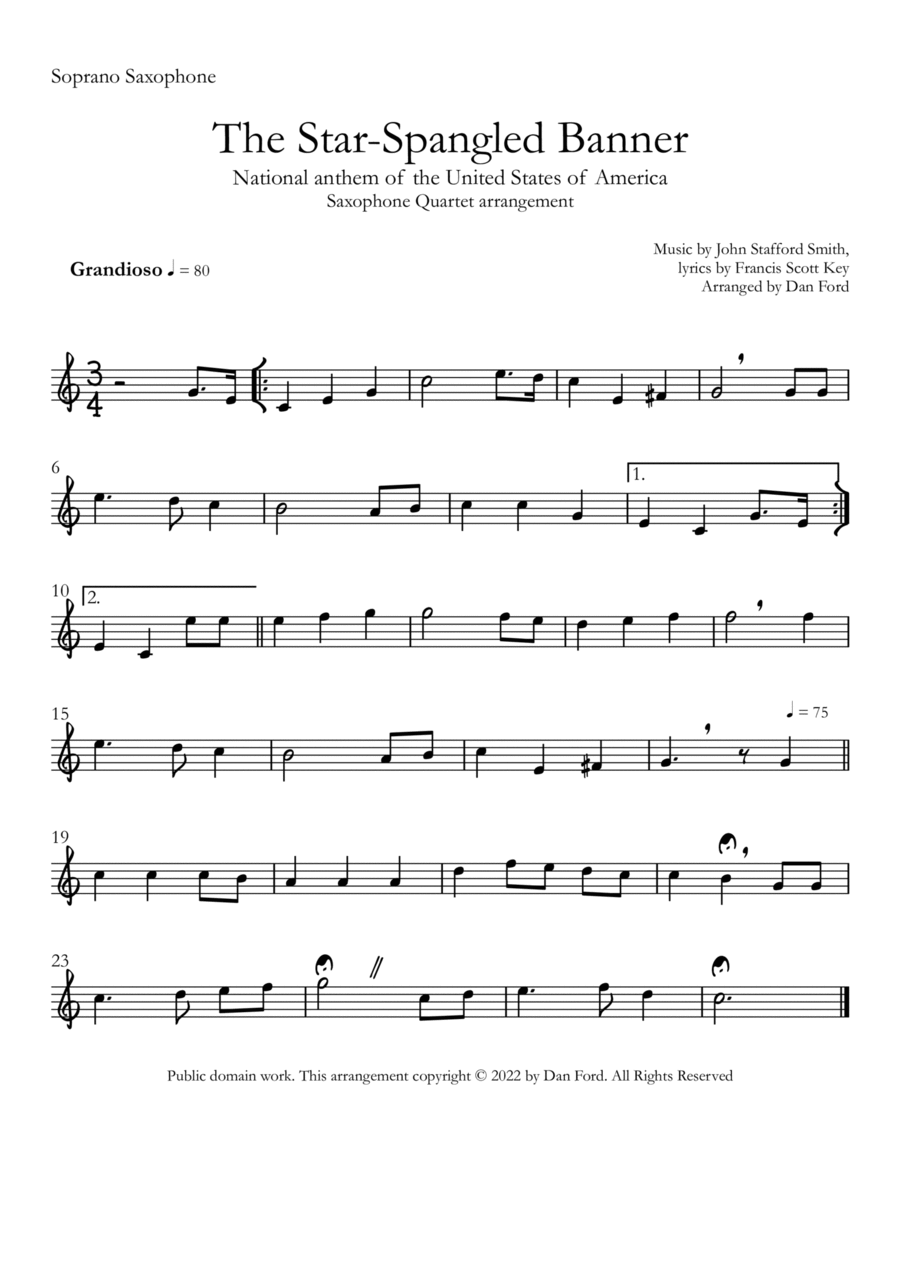Saxophone Quartet,Woodwind Ensemble Alto Saxophone,Baritone Saxophone,Soprano Saxophone,Tenor Saxophone - Level 2 - Digital Download SKU: A0.1094082 Composed by Francis Scott Key and John Stafford Smith. Arranged by Dan Ford. Folk,Multicultural,Patriotic,Traditional,World. 6 pages. Dan Ford #698186. Published by Dan Ford (A0.1094082). The Star-Spangled Banner — saxophone quartet Music by John Stafford Smith, lyrics by Francis Scott Key. Arranged by Dan Ford for saxophone quartet, including parts for soprano, alto, tenor, and baritone saxophones. This arrangement is gig-tested and designed for ease of reading during the heat of a live gig. The Star-Spangled Banner is the official national anthem of the United States of America. This arrangement includes a soprano saxophone part on the lead (melody), and also an optional lead part on alto saxophone for when a soprano is not available. The remaining voices are split between alto, tenor, and baritone saxophones in SATB voices. Also included is an optional drum set part, although the arrangement can be played effectively without the drum part. Find more arrangements by Dan Ford at www.danfordmusic.com.
